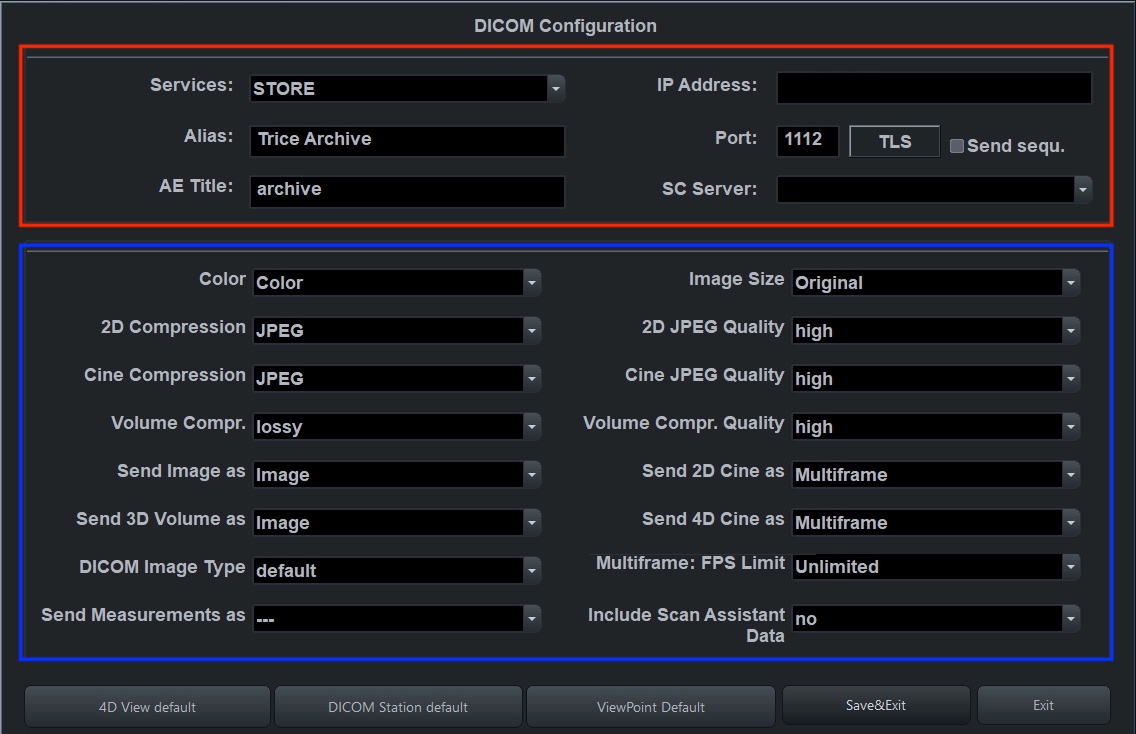Follow the process below to configure your ultrasound system to send data to Tricefy.
Select the Utility hard-button located on the machine:

The Utility screen will display on the LCD monitor. Select Setup, followed by Connectivity:

The Connectivity screen has four tabs at the top (five if you have Tricefy Inside). Choose the Device Setup tab and select the DICOM Configuration button:

The DICOM Configuration screen allows you to add new stores. These stores are like warehouse receiving centers; they receive the data from your ultrasound system.
We will create two stores: one for sending images to patients and one for archiving.
- If you are only patient sharing, you do not need to setup the archive store - skip to patient sharing.
Select the Add button to create the archiving store:

Enter the following information into the top fields, shown below in the red box:
Alias = Trice Archive
AE Title = archive
IP Address = Local IP of the Uplink computer (Refer to Account Settings)
Port = 1112 is the default port for Tricefy Uplink (refer to Account Settings)

By default, the compression settings, shown above in the blue box, will have to be adjusted for the optimal compression. Don't worry, adjusting these settings will not lower image quality. Modify the compression options to match the following settings in the screenshot of the blue box above.
Once you are done modifying the compression settings, click Save & Exit:

Select the Add button to add the patient-sharing store. Enter the following information into the top fields:
Alias = Trice Patient
AE Title = patient
IP Address = Local IP of the Uplink computer (Refer to Account Settings)
Port = 1112 is the default port for Tricefy Uplink (refer to Account Settings)
Modify the compression settings to match those in the screenshot of the blue box from the previous step.
When you are done, click Save & Exit again.
References
 How to test your imaging system
How to test your imaging system Port and IP Address of the Uplink computer
Port and IP Address of the Uplink computer GE Support page
GE Support page
Note: GE ultrasound machines are consistent in configuration and functionality across varying models.
 Copyright © 2016-2026 Trice Imaging, Inc. All rights reserved. 1065 SW 8th Street | PMB 5828 | Miami, FL 33130 | USA
Copyright © 2016-2026 Trice Imaging, Inc. All rights reserved. 1065 SW 8th Street | PMB 5828 | Miami, FL 33130 | USA